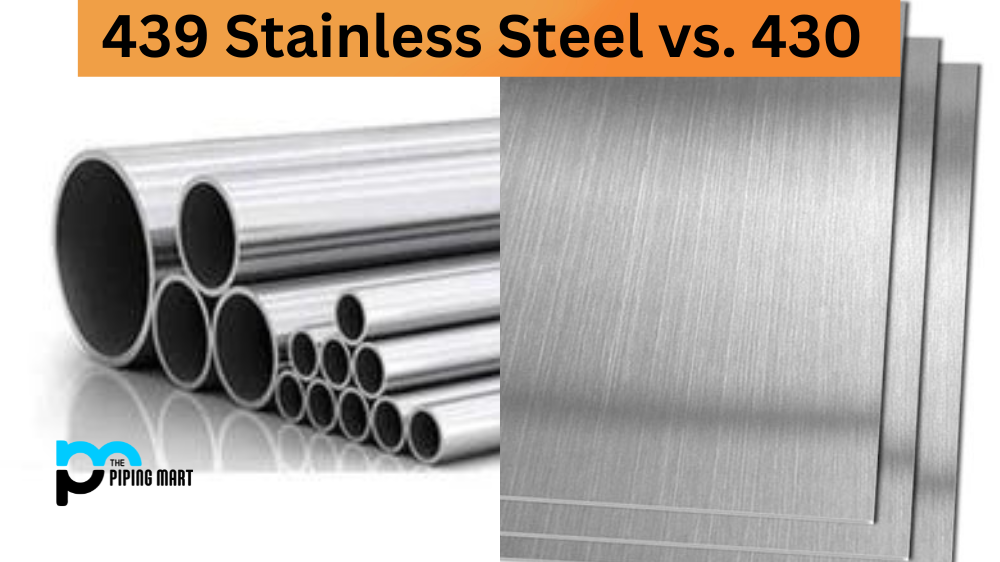In the world of metal alloys, hastelloy and monel are two of the most popular ones. These alloys are mainly used in the aerospace, chemical processing, and marine industries. Hastelloy and Monel are often compared due to their similar characteristics and properties. However, there are significant differences between them that determine their usability in different applications. This blog aims to provide a comprehensive guide for anyone wanting to know the difference between Hastelloy and Monel alloy.
What is Hastelloy?
Hastelloy is a trademarked name for a group of nickel-chromium-based superalloys. These alloys are known for their exceptional corrosion resistance, high-temperature strength, and ease of fabrication. Hastelloy alloys are used in various industries, including chemical processing, oil and gas, power generation, and pharmaceuticals.
What is Monel?
Monel is a trademarked name for a group of nickel-copper-based alloys. These alloys are known for their exceptional corrosion resistance, high strength, and ease of fabrication. Monel alloys are used in various industries, including chemical processing, marine, oil and gas, and power generation.
Difference Between Hastelloy and Monel
Composition
Hastelloy is a nickel-chromium-molybdenum alloy that also contains tungsten and cobalt. On the other hand, Monel is a nickel-copper alloy that also contains small amounts of iron, manganese, and silicon. The composition of hastelloy makes it highly resistant to corrosion and oxidation, even in high temperatures, whereas Monel is known for its excellent resistance to seawater and steam.
Applications
Hastelloy is mainly used in chemical processing, producing materials like acetic anhydride, chlorination systems, and nuclear fuel processing. On the other hand, Monel is used in marine engineering, particularly for high-performance applications like piping systems and seawater valves. It is also used in oil and gas refining and processing equipment.
Strength
Hastelloy has high-temperature strength and can retain it at temperatures up to 1100°C. This makes it ideal for high-temperature applications, including furnace components and combustor parts. In comparison, Monel is known for its high strength and toughness, even at low temperatures. Therefore, it is widely used in equipment that operates in sub-zero environments, such as deep-sea drilling, submarine cables, and aircraft parts.
Machining
Hastelloy is known to be difficult to machine due to its high heat resistance and hardness. It requires high-speed steel or carbide-tipped tools and special techniques to cut efficiently. Monel, on the other hand, can be easily machined with the right tooling and equipment.
Cost
Hastelloy is generally more expensive than Monel due to its extra alloying elements. The cost of hastelloy can also vary depending on the grade, thickness, and application. Monel is relatively cheaper, but the cost can vary depending on the grade and application.
Corrosion Resistance
One of the most important properties of Hastelloy and Monel alloys is their corrosion resistance. Both alloys resist various corrosive media, including acids, alkalis, and salt water. However, Hastelloy is generally considered to be more corrosion-resistant than Monel.
High-Temperature Strength
Another important property of Hastelloy and Monel alloys is their high-temperature strength. Both alloys can maintain strength at temperatures above 1000°F (538°C). However, Hastelloy is generally considered to have better high-temperature strength than Monel.
Ease of Fabrication
Hastelloy and Monel alloys are both known for their ease of fabrication. These alloys can be easily welded, machined, and formed into various shapes. However, Hastelloy is generally considered to be easier to fabricate than Monel.
Applications
Hastelloy and Monel alloys are used in a variety of industries and applications. Some common applications for these alloys include chemical processing equipment, oil and gas production equipment, power generation equipment, marine environments, and pharmaceuticals.
Chemical Processing Equipment
Hastelloy and Monel alloys are often used in chemical processing equipment due to their exceptional corrosion resistance and high-temperature strength. These alloys resist many corrosive chemicals, including acids, alkalis, and salt water. Additionally, these alloys can withstand temperatures above 1000°F (538°C), making them ideal for use in high-temperature environments.
Oil and Gas Production Equipment
Hastelloy and Monel alloys are also commonly used in oil and gas production equipment due to their exceptional corrosion resistance and high-temperature strength. These alloys can resist the corrosive effects of salt water and other harsh chemicals found in oil and gas production environments. Additionally, these alloys can withstand temperatures above 1000°F (538°C), making them ideal for use in high-temperature environments.
Power Generation Equipment
Hastelloy and Monel alloys are also often used in power generation equipment due to their exceptional corrosion resistance and high-temperature strength. These alloys can resist the corrosive effects of salt water and other harsh chemicals found in power generation environments. Additionally, these alloys can withstand temperatures above 1000 ° F( 538 ° C), making them ideal for use in high-temperature environments.
Conclusion:
In conclusion, Hastelloy and Monel are two distinct alloys that offer unique advantages in different applications. While Hastelloy is best for high-temperature applications, Monel is ideal for seawater and sub-zero environments. In terms of cost, Hastelloy is generally more expensive, but it offers superior resistance to corrosion and oxidation. Whether you need to use Hastelloy or Monel will depend on the specific application requirements. Therefore, it is important to understand the characteristics and properties of these alloys before making a decision.

Abhishek is a seasoned blogger and industry expert, sharing his insights and knowledge on various topics. With his research, Abhishek offers valuable insights and tips for professionals and enthusiasts. Follow him for expert advice on the latest trends and developments in the metal industry.




